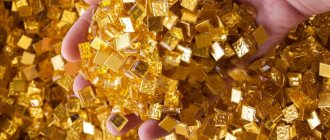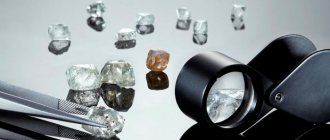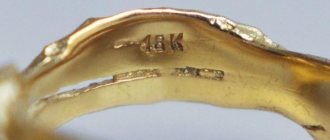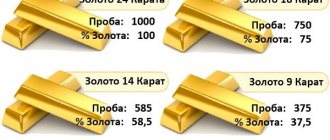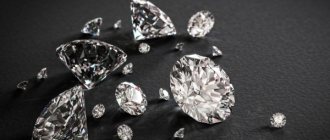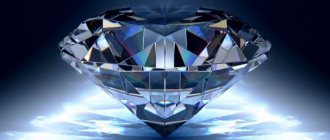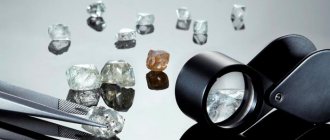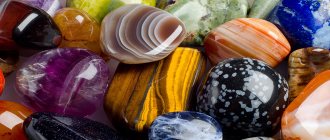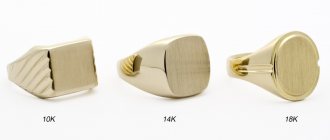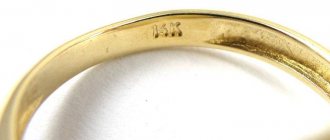Many people remember Soviet times and the jewelry that almost every woman wore then. They were all similar, as they differed little in design. But what was remarkable to many of them were the large stones, in particular rubies and alexandrites; few people knew then that they were synthetic. And all because there was no knowledge about the cost of stones. Alexandrite is one of the most expensive, and ruby is not much inferior to it. And really, how much is a ruby worth?
It is impossible to answer this question immediately. Like many gemstones, the cost of red corundum depends on many factors. Contrary to what most people think, it is not just the size of the stone.
Natural stone ruby
There are large rubies that are inexpensive. The cost will depend on factors such as color, origin, purity. Cutting and refining methods will also play an important role in this parameter.
The most famous rubies are mined in Burma. They are distinguished by a rich red color, with a slight blue tint. The color of such stones is called “pigeon blood”. Of course, such rubies are most accessible directly in Burma, but this does not mean that if you buy a stone there, it will definitely be of high quality.
Another interesting factor regarding ruby color is fluorescence. A property that is undesirable in diamonds is welcomed here. Since it is strongest in the red part of the spectrum, this property makes the ruby especially beautiful and shimmering. Not all rubies fluoresce, as different dyes, such as chromium and iron, can produce red colors and shades. Burmese rubies are colored with chrome and that is why they are so highly valued.
As with all gemstones of the highest grade, transparency is very important for them. It changes due to inclusions and microcracks. Such inclusions can be, for example, calcite or rutile.
Interestingly, their presence has different effects on the value of the ruby. The first reduces it, while the second increases it. Small needles of rutile in ruby are called "silk", and under some circumstances they can form an asterism effect. Such stones are star-shaped, they are cut into cabochons and are very expensive.
Of course, weight plays a primary role in determining the price of a ruby stone. Unlike other stones, high quality rubies are very rare and often weigh less than five carats after cutting. This causes the price to rise very quickly in proportion to the mass, much more than for sapphires and diamonds.
For example, the largest high-quality ruby that was sold at auction in 2014 weighed less than 30 carats, while the largest diamond weighed 545 carats. For reference: “Cullinan” from the collection of the British crown is not one of these today. But it is the largest colorless diamond, and at 530 carats, it is still much larger than rubies. Therefore, a high-quality 10-carat ruby will likely be more expensive than a similar-sized diamond.
A sensitive issue in the cost of rubies is the methods used to refine them. You can often hear the term “heated ruby” among jewelers. What does it mean? The fact is that by nature, most stones are endowed with inclusions, color inhomogeneities and are faded. When the stone is heated to high temperatures in a thermostat, most of the inclusions dissolve, and the chromium that is present there penetrates the structure of the stone and makes its color more rich and beautiful.
This method of processing is considered acceptable, but concealing it during sales is fraudulent. But there are other methods. For example, cracks in stones are often filled with composite resins or oil. Depending on the quality of the filling, the life of the mineral in this state may not last long. In addition, if there are too many cracks, then, in fact, it is no longer quite a ruby.
Surface-colored stones are not of very high quality. This is done as follows: the stone is heated in the presence of chromium, which penetrates the mineral to a shallow depth. This is due to the fact that chromium molecules are large. Such a fake can be revealed when you try to re-polish or re-cut the stone, but until then the layer will hold on. Unless, of course, the ruby is scratched, but this can only be done with the help of a harder mineral, for example, diamond.
Earrings with rubies
In order for the properties of a stone to be maximized, it must be properly cut. When cutting rubies, like other minerals, symmetry, shape, and quality of polishing are very important. If the stone has cracks or scratches, a pavilion, that is, the lower part is too long or short, and the stone does not seem very attractive to you and has “irregular shapes,” then such a cut is not of high quality. The most valued cut for rubies is the round cut, reminiscent of a diamond, but the marquise cut, or step cut, is valued lower.
No matter how high the quality of a ruby may be at first glance, a document can put an end to any debate regarding its price. It is not always possible to determine all parameters by eye and distinguish the synthetic origin of a mineral. The certificate will also help protect you from buying a stone that has been refined at the price of an untreated one.
What determines the value of a ruby?
Types of rubies
- Deposit and color of the stone. The most expensive rubies are “the color of pigeon blood”; they are scarlet and rich. Rubies with pink or purple hues will be cheaper. Burmese stones are most valued, stones from Mozambique are a little less valuable. Rubies from India, Vietnam and Thailand are considered cheaper. Only a specialist can determine the country of origin of a ruby.
- Purity of the stone. Cracks, foreign inclusions, and cloudiness negatively affect the price of the stone. But if a ruby contains natural inclusions of rutile, it will cost more. Small needles of rutile in certain lighting form a star-shaped effect.
- Mineral weight. Large rubies are practically never found in nature. Therefore, the price of a stone per carat will increase in proportion to its weight.
- The cut of a finished ruby affects the revelation of its radiance and natural brilliance; you can recognize an expensive stone by its quality cut.
- Natural or artificial origin of the stone. A lab-grown stone is much cheaper than a naturally occurring mineral.
- Exchange rates. The price of precious stones is published on the world market in dollars; with exchange rate fluctuations, the price of jewelry in Russia may rise or fall.
Gem prices in the world
In world practice, there are organizations that produce guide tables with the value of rubies. For example, in one of the magazines the following classification is given:
- A low quality ruby will cost, depending on its origin, from $75 to $3,500 per carat. The most expensive are Burmese, the cheapest are heated.
- Good quality rubies originating from Burma will be valued at 5-12 thousand, from Mozambique - 2-8 thousand, processed - 1.5-4 thousand.
- A very good quality ruby is much more expensive. Treated stones from this category will have a price of 5–9 thousand, and untreated stones from Burma will cost 16–40 thousand.
- Ruby of excellent quality: heated 12-23 thousand, Mozambique - 20-30 thousand, Burma - 40-70 thousand.
- Rubies weighing more than 4 carats will be more expensive. For example, such specimens from Burma will be valued at 60–90 thousand per carat.
The price of a ruby directly depends on its beauty, color, purity and the absence of visible defects
Cost of artificial rubies
In Soviet times, we dealt with synthetic or refined rubies. How do these stones differ from natural ones?
- A refined ruby is a ruby of natural origin that has undergone processing due to its low quality. The price of a refined stone will be about $30, and the quality may be much lower than that of a synthetic one.
- A synthetic ruby is ruby grown in a laboratory. There are such laboratories in Europe and Russia. It will not be inferior to its natural counterpart, but a carat of synthetic ruby can cost only $2. Artificial stones are more often used for industrial purposes; their appearance in jewelry makes it possible to significantly expand the range of designer products.
Determining which ruby is in front of you is very simple. As a rule, real stones contain small inclusions, are not so transparent and differ from each other. To protect yourself when purchasing, be sure to require a certificate. All jewelry with precious stones must have it.
Price in Russia
In Russia there is a classification that distributes rubies into groups of defects and color; the methodology is recognized by official documents and includes the following groups:
- Quality 1 - pure rubies or with minor defects in the form of stripes or dots, which are located in different areas of the stone and are not grouped. Such inclusions can only be distinguished by equipment. This category of stones is estimated from $800 to $1,500 per carat. It is impossible to find them on sale; they immediately end up in the collections of the richest people.
- Quality 2 - the stone has defects, pinpoint inclusions of other minerals, cracks in visible areas. Clusters of them can be seen with the naked eye. Cost: $500–800 per carat. Found in most large stores.
- 3rd quality - rubies that have significant defects located throughout the entire volume of the stone. They have cloudy areas and are being processed. Cost: $200–500 per carat.
Almost all rubies are processed in one way or another. Most often they are subject to heating. If a ruby is naturally of ideal quality and does not require any processing, it will cost from 30 thousand per carat. Rubies cured with glass have a much lower value, up to $30 per carat. Everything that is cheaper than 5,000 rubles is either synthetic or completely glass.
Criteria for evaluation
Estimating the value of a natural ruby depends on many factors. In this case, it is worth taking into account its weight, place of extraction, size, color. The cost is also affected by the presence of defects and cutting features. The price of real stones is determined not in rubles, but in American dollars.
Field
Rubies are found on all continents. The only exception is Antarctica. Stones are mined in large quantities in Asia. They are found in Vietnam, Thailand, and Ceylon.
African deposits are located in Madagascar and Tanzania. There are also rubies in Mozambique and Kenya. The largest stone, measuring 400 carats, was found in Burma. India is considered a promising option.
At the same time, the approximate cost of gems depends on the deposit. So, for 1 carat of a large ruby, which was mined in Burma, they can pay 2-90 thousand dollars. At the same time, crystals from Mozambique will cost much less. A stone weighing 4-5 carats can be purchased for $500.
Quality
Finding perfect rubies in nature is difficult. Usually they are distinguished by various defects - cracks or voids. High-quality gems are those that have no flaws. At the same time, there are inclusions that increase the cost. These include microcracks that form a six-pointed star.
Another quality parameter is cleanliness. Based on this feature, crystals are divided into the following groups:
- the first - includes small inclusions or thin cracks;
- the second – contains gems with minimal defects or condensations;
- the third includes opaque stones or gems with large opacities.
Important! Cost is affected by processing. Of particular value is a cut with correct proportions without chips, stripes or gouges.
The cost of the stone is affected by the type of processing. The number of crystals that do not require special thermal effects does not exceed 5%. Usually the stones are heat treated. This procedure is called refining.
To do this, the material is placed in chambers in which it is heated to 800-1900 degrees. Under the influence of temperature, the color of the ruby changes and extraneous shades are eliminated. The inclusions present in the stone melt. This leads to an increase in its purity.
When comparing stones that have undergone thermal treatment and ordinary ones, the cost of the latter, with other identical characteristics, is 2-3 times higher.
Upgrading often leads to cracks. Lead glass is used to eliminate defects. In appearance, the stone becomes perfect. However, jewelers classify such crystals as the cheapest. Their price is 1-20 dollars per carat.
Size
The cost of precious stones depends not on size, but on weight. Mass is considered the main characteristic. The weight of rubies is measured in carats. To understand the size, it is worth noting that 1 carat corresponds to 0.2 grams.
The price of a ruby is set not for 1 gram, but for 1 carat. But not everything is clear here. Small stones cost less than large crystals. Therefore, there is no direct connection between mass and price.
The cost of a ruby depends not only on the size, but also on the quality of the stone. However, the larger the dimensions, the less likely it is that the crystal will have an impeccable structure. Rubies weighing 3 carats are rare. At the same time, it is impossible to find gems weighing 5 carats without defects.
Color
How much a ruby will cost depends on the color. Real stone often has a red tint. At the same time, it changes from light to bright and saturated. Pink, purple or orange rubies are also found. These shades are associated with the presence of natural inclusions.
A pure ruby with a rich red hue is called pigeon's blood. In this case, according to the classification of colors, the following options are distinguished:
- bright red;
- medium red;
- light red.
Important! Descriptions of shades include saturation. Bright stones are much more expensive than light or dull ones.
Not just decorations?
Beautiful pebbles uses:
- precision instrumentation;
- areas using laser technologies;
- jewelry industry.
Expert opinion
Semenishcheva Polina
Specialist in mineralogy. Graduated from St. Petersburg Mining University.
Informative : gems can be used as ornamental stones. Do not be surprised. Many stones do not reach jewelry standards. That’s why they are used to decorate designer items.
Star tips ♈
The Fire Stone favors everyone involved in this element:
- Aries;
- A lion;
- Sagittarius (to a lesser extent).
Astrologers do not advise wearing a gem:
- Cancer;
- Virgos;
- Taurus.
Is Ruby right for you?
Not really
Element?
Fire
Planets?
Sun
Mars
Energy ☯️
Jan
Some of the most expensive rubies in jewelry
In May 2015, a 25-carat Sunrise ruby was sold at Sotheby's auction. The item that included this stone was made in the form of a ring and was surrounded by two diamonds. According to the auction, the price for which the ring was purchased was 30 million.
Another ruby, called "Count", was sold in 2014. It weighed eight carats and sold for eight million dollars. That ruby was also surrounded by two large triangular-shaped diamonds and many small ones. According to the certificate, the stone comes from Myanmar and has not been refined.
In Hong Kong in 2014, a diamond brooch encrusted with a 10-carat ruby was sold. The cost of the jewelry was eight million, and the design was developed by the world famous company Cartier, like many other jewelry from the category of the most expensive.
Star Ruby and Zodiac Signs
A star ruby will never harm an ambitious and decent person, but this does not mean that it is suitable for all representatives of the Zodiac system.
The stone has ideal compatibility with Leo, Aries, Sagittarius, Capricorn and Cancer:
- With the help of the mineral, Leos can strengthen willpower and increase the desire to achieve goals;
- ruby will bring liveliness and variety to the life of Aries;
- Sagittarius will develop their sociability, which will attract new acquaintances, become more reasonable and accommodating;
- Capricorns, with the help of a star gem, will be able to strengthen their inherent self-confidence and determination;
- For Cancers who are insecure, the star ruby will push them to take action.
It is not recommended for Taurus and Libra to wear this stone. Representatives of these signs can be misled by the gem and sent down the wrong path.
The stone is not contraindicated for Gemini, Virgo, Scorpio, Aquarius and Pisces. They can wear jewelry with a stone, but it will not show any pronounced properties in relation to them.
Properties ?
Ruby is a type of corundum. Many of their properties are the same.
Artificial ruby in normal light
Artificial ruby under green laser light
Physico-chemical?
- The color of the stone depends on chromium impurities. The shade comes from impurities. The higher the iron content, the more distinctly red-brown, vanadium gives a purple hue.
- The color may be distributed unevenly: zonally, in spots.
- Ruby is characterized by pleochroism - from dark to orange-red.
- Does not dissolve in acids.
Synthetic Verneuil ruby broths (longest about 2 inches)
Crystal structure of rubies
Stars in rubies?
Sometimes a star is clearly visible in a ruby. It has 6 or 12 rays. This asterism is a rare property of a gem. The star crystals are cut in cabochons.
An asterisk in a ruby greatly increases the price of the crystal.
Do litotherapists advise?
Expert opinion
Semenishcheva Polina
Specialist in mineralogy. Graduated from St. Petersburg Mining University.
An old Russian medical book says that ruby “keeps the human body healthy from all sorts of illnesses.”
The gem was credited with an antitoxic effect, which was important for those in power (you never know what impatient heir will decide that the parent has lived in this world).
The gem will help in the treatment of:
- infectious diseases;
- fever, elevated temperature;
- blood diseases.
Wear ruby jewelry if you have problems with the cardiovascular system.
The gem stimulates the functioning of the kidneys, spleen, and reproductive organs.
Important : if the owner has an excess of “Yang principle,” ruby can increase blood pressure and provoke nervous breakdowns.
Esotericism about the magic of gems?
- Red yachts do not change the properties of the owner - they only emphasize and enhance them.
- A ring with a ruby will protect against psychic attacks and energy vampirism.
- Ruby arouses interest in life, but does not put anyone on the path of self-destruction.
- The stone feeds the life energy of the owner. But people who are irritable or have an easily excitable nervous system should not wear it.
- But ruby jewelry is useful for people recovering from a serious, debilitating illness.
- It will enhance sexual activity and help you communicate freely with strangers (useful for unsociable, modest people).
- The gem has changed color and shine - be on the lookout. Danger is approaching.
- The magic of the ruby is unprincipled. It will fulfill the owner’s wishes, but the stone does not care how honest and decent they are.
Stone of power?
Ruby is one of the most significant stones in human history.
Mages call the gem a blood clot of the Dragon, capable of giving unlimited power over people.
It is believed that ruby was the favorite stone of Ivan the Terrible.
Europeans became acquainted with rubies after the campaigns of Alexander the Great. However, earlier the stone could have come to Europe from Africa.
Three carved rubies, 75.09 carats, Myanmar.
Amulet with a ruby eye from Mesopotamia, Adilnor collection, Sweden.
Origin of name ?
The Latin name comes from rubeus (red).
In Sanskrit there were two names for ruby: manikiya - the king of gems, and ratnanayana - the leader of gems.
In Rus', rubies were called lal, red (scarlet) yakhont.
How to wear a ruby ring correctly?
Women are advised to wear ruby in a ring on their left hand or as an insert in a pendant to place the mineral closer to the heart. And a man who has this wonderful stone is recommended to wear the talisman in a place where no one will see it, for example, as an insert on a pectoral cross.
Interesting materials:
What was the salary in the nineties? Which dynasty has ruled France since 1589? What is the Airborne Forces anniversary this year? Which of the following countries produces the largest number of cars per year? Which river in Africa is full of water all year round? Which Soviet republic joined the Union in 1936? What kind of goat was there in 2003? What kind of goat was there in 2015? What international prize for literature was awarded to Solzhenitsyn in 1970? What will the minimum wage be in 2022?
How many grams are in one carat of jewelry?
You can determine the weight of a gem yourself; there are several ways to do this.
Diameter to weight ratio
You can find out the weight by diameter if you are dealing with round gems. A special table shows the ratio of the mass of the stone and its diameter. For example, 1 carat is how much in diameter:
- 1 millimeter – 0.005 carats;
- 2 mm – 0.003;
- 3 mm – 0.1;
- 4 mm – 0.25;
- 5 mm – 0.5.
The larger the diameter of the gem, the higher its mass. Here you should also take into account the type of cut, since an oval cut will require less material than a classic round cut.
Calculation of gem weight relative to cut
In the absence of scales, minerals are measured using their length, width and cut. Here are some excerpts from the table for determining weight by cut:
- Round. The squared diameter is multiplied by the height of the stone, by its density and a coefficient of 0.0018.
- Marquis. Length multiplied by width, height, density and a factor of 0.0016.
- Round cabochon. The diameter is multiplied by the density of the stone and a coefficient of 0.00259.
Attention! When using this method, you must always take into account possible defects and add 3-6% of the resulting mass to the convexity of the stone.
